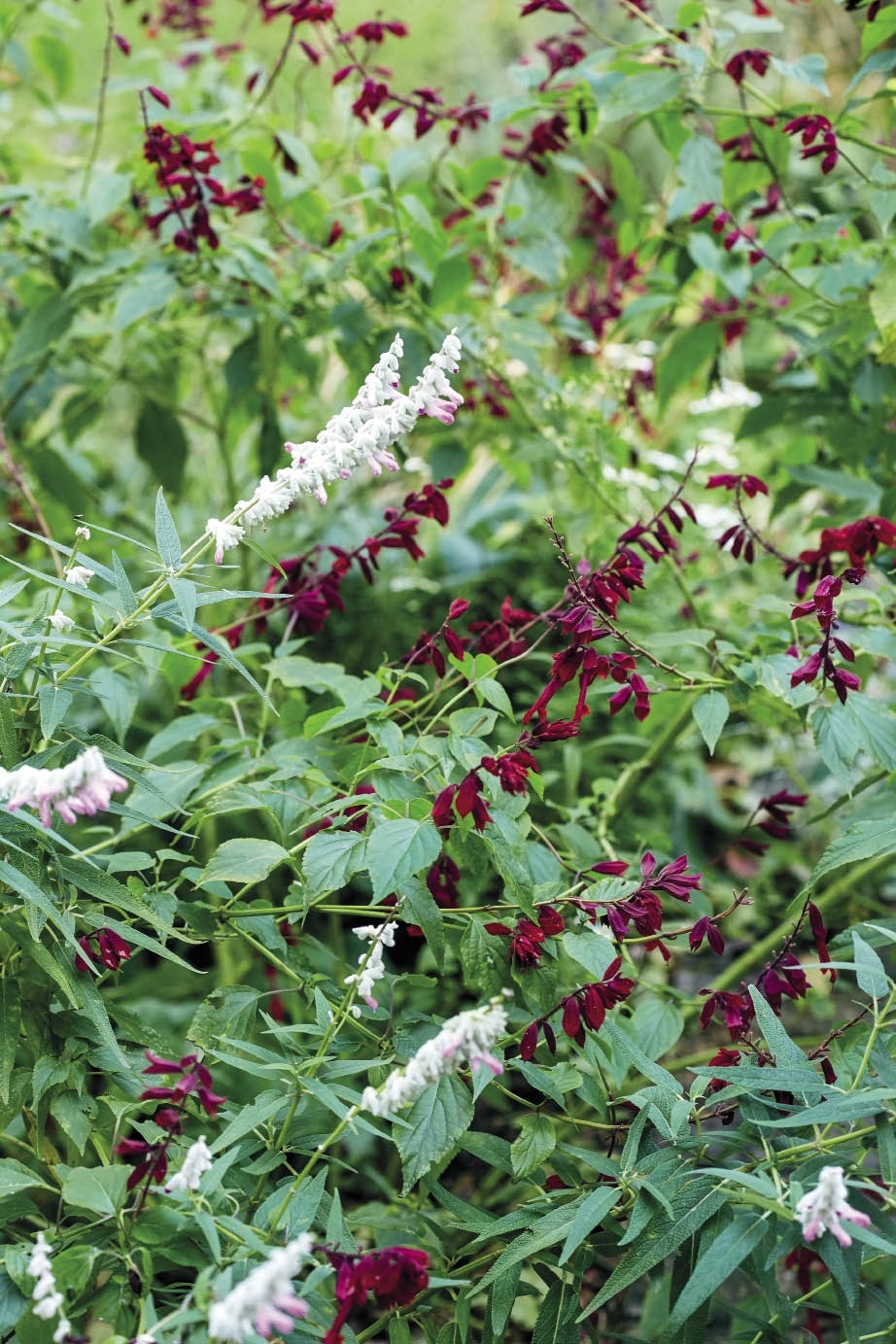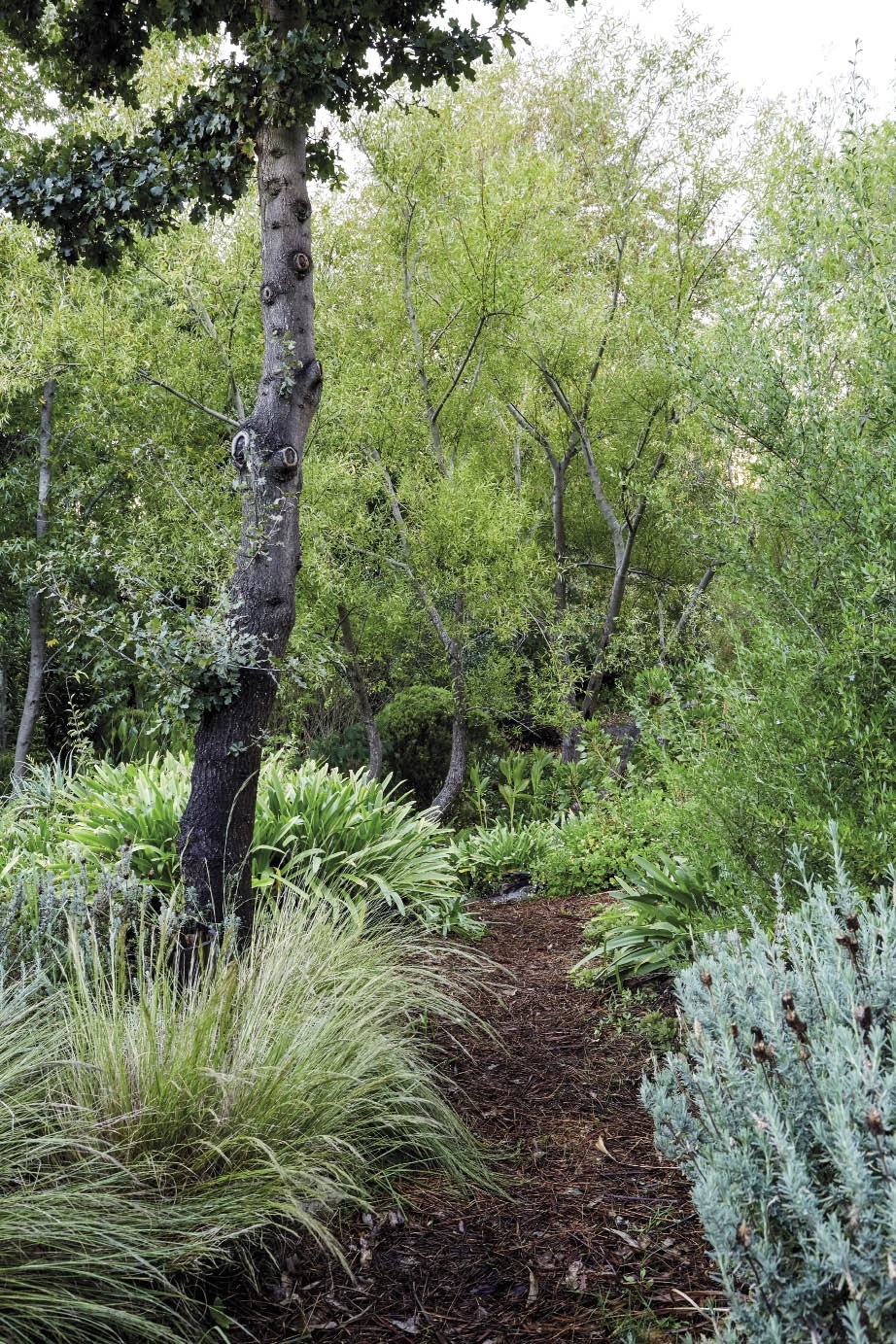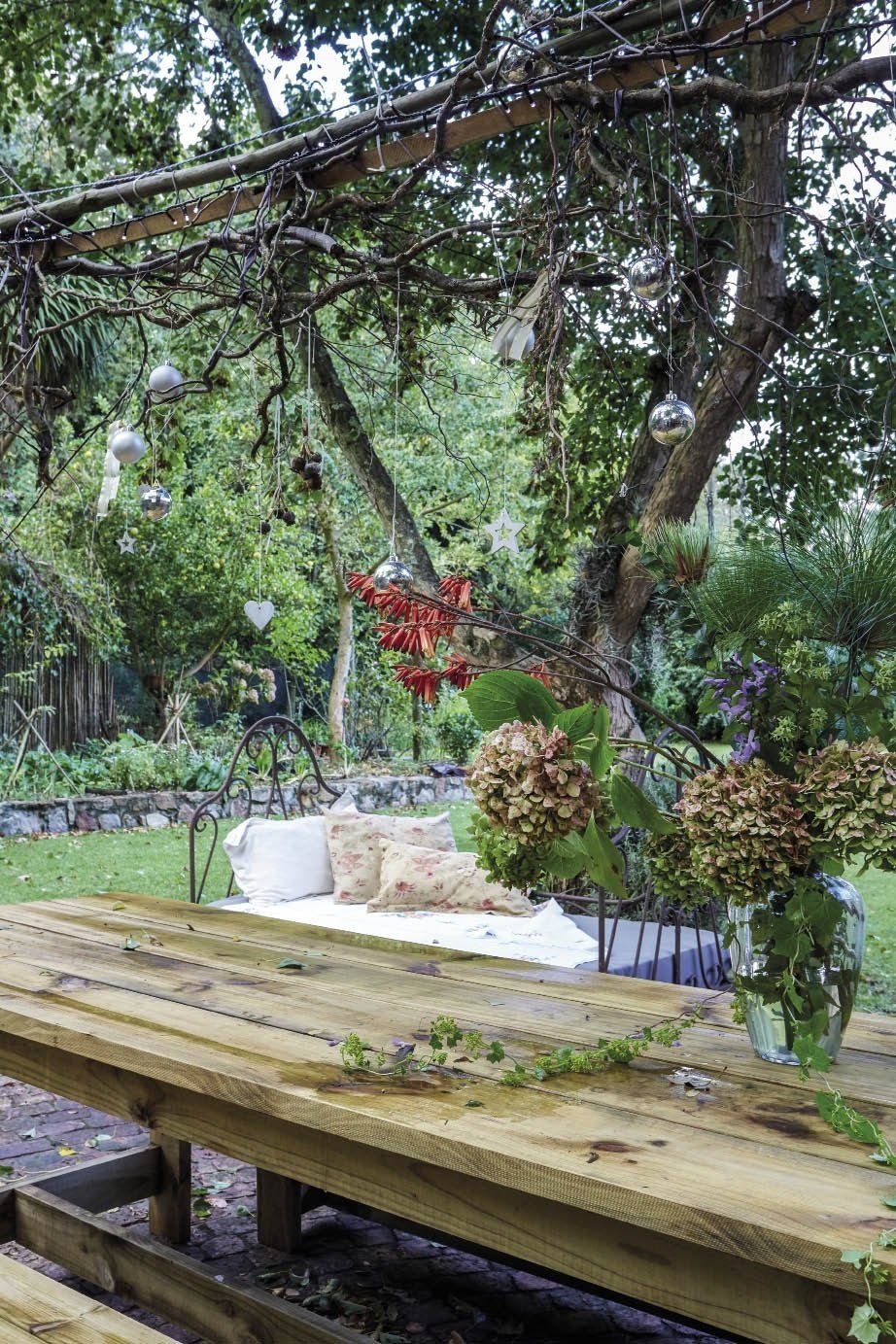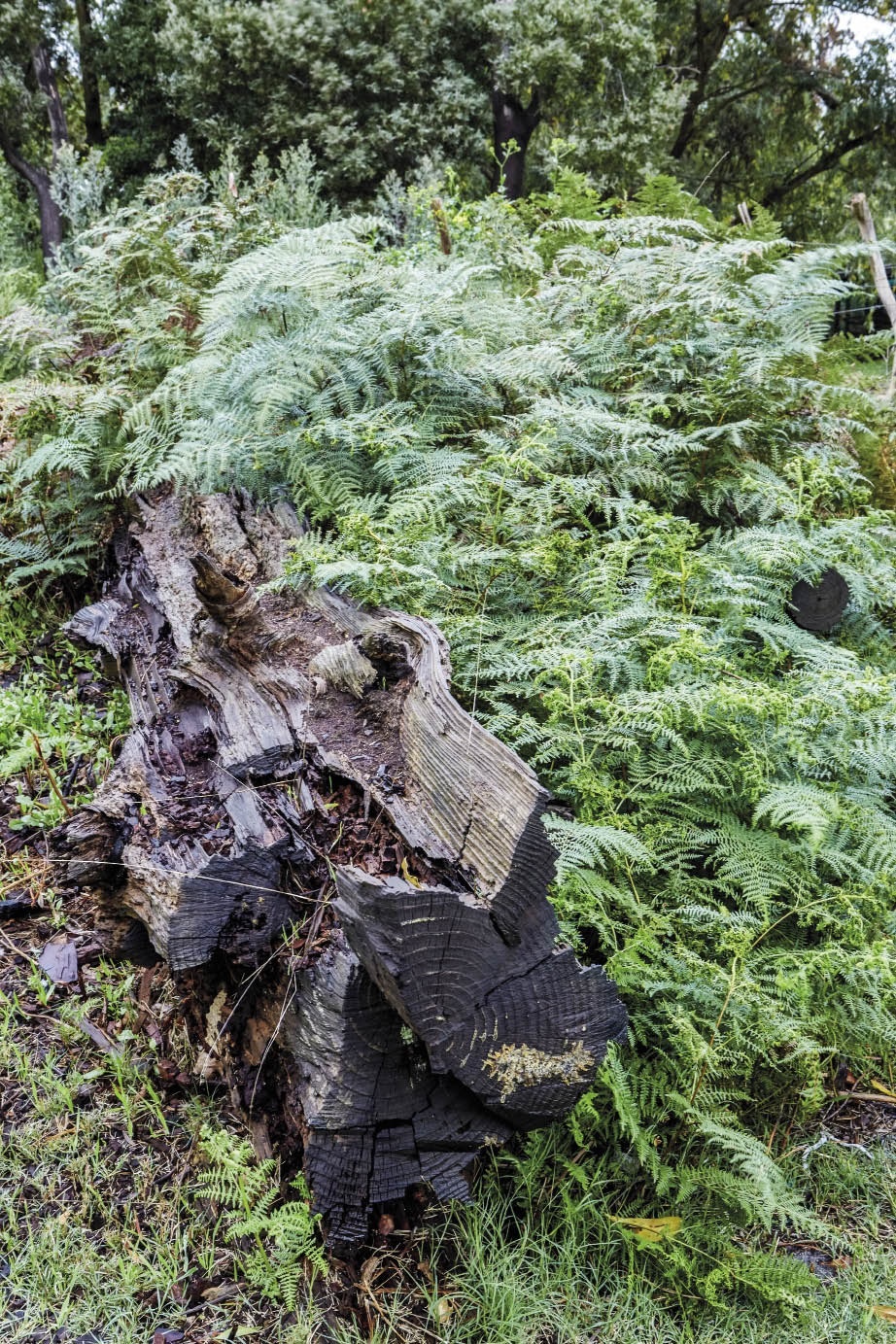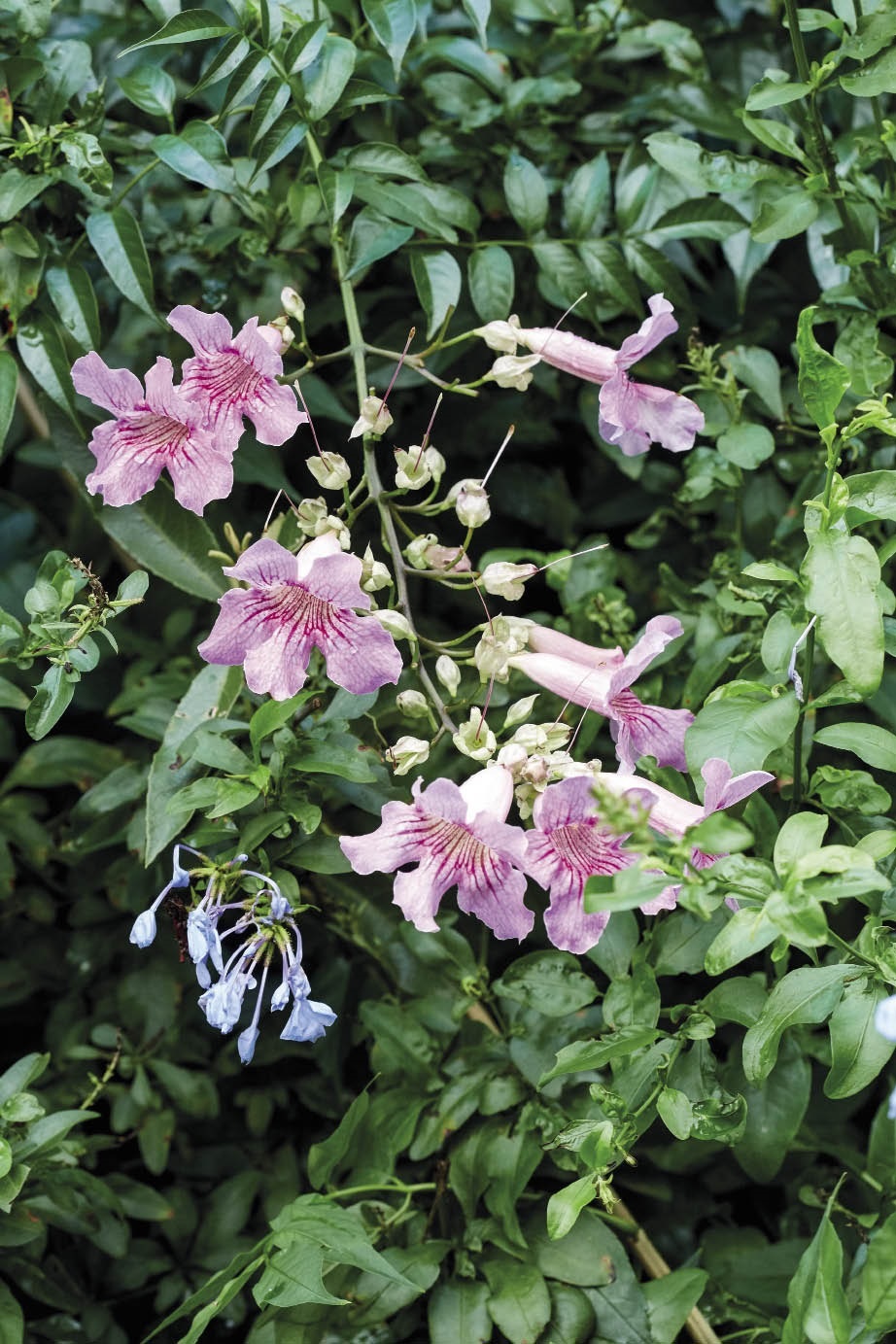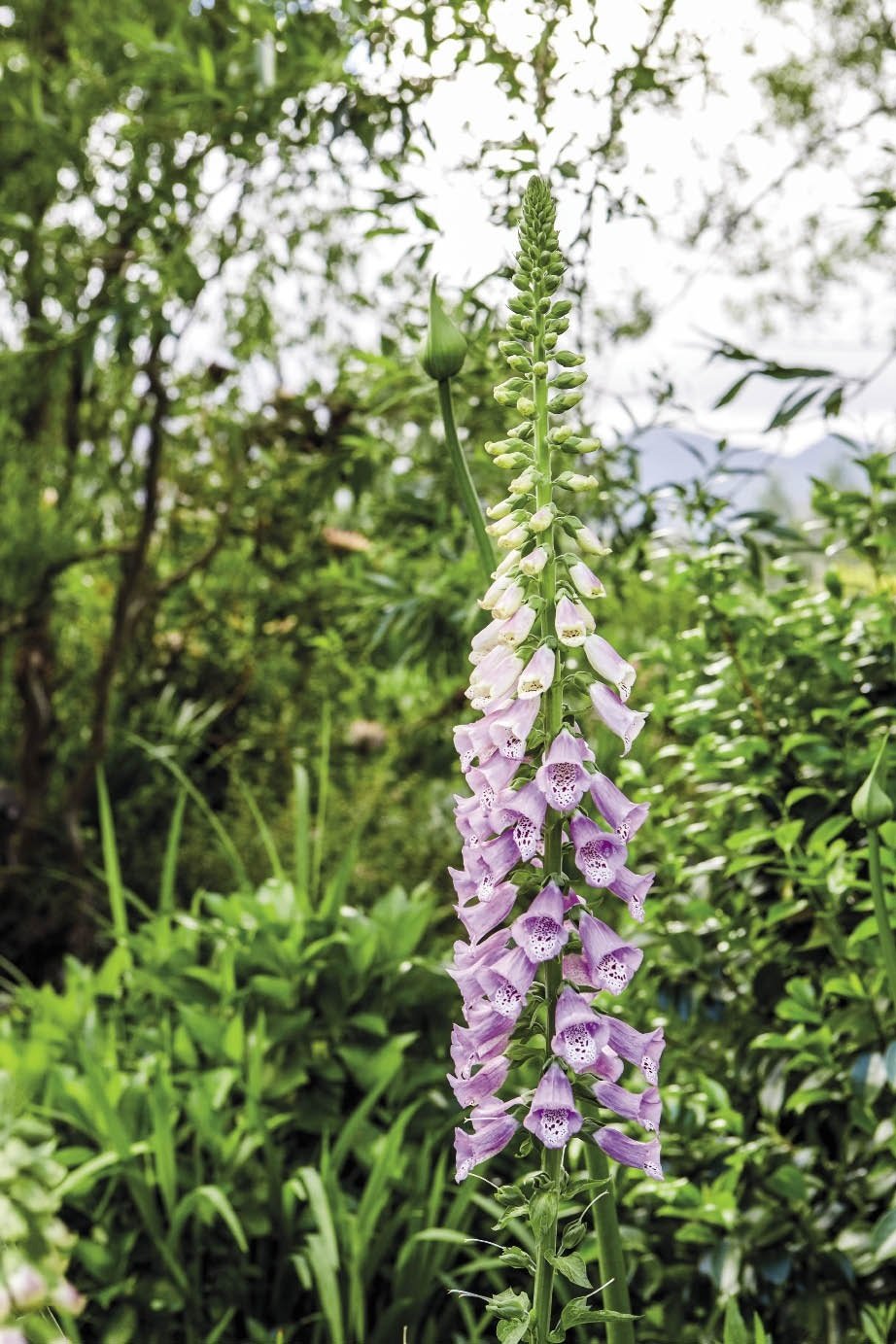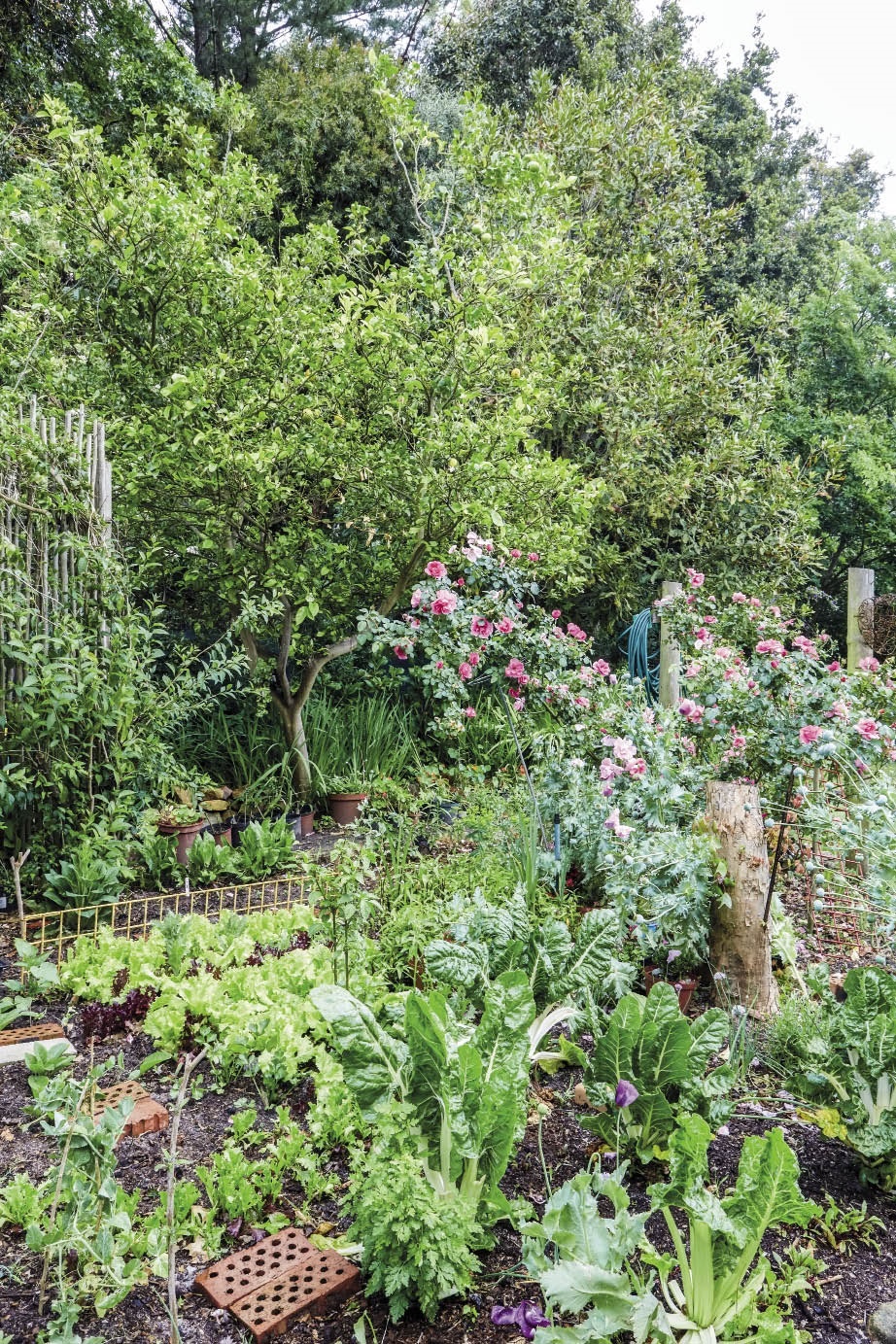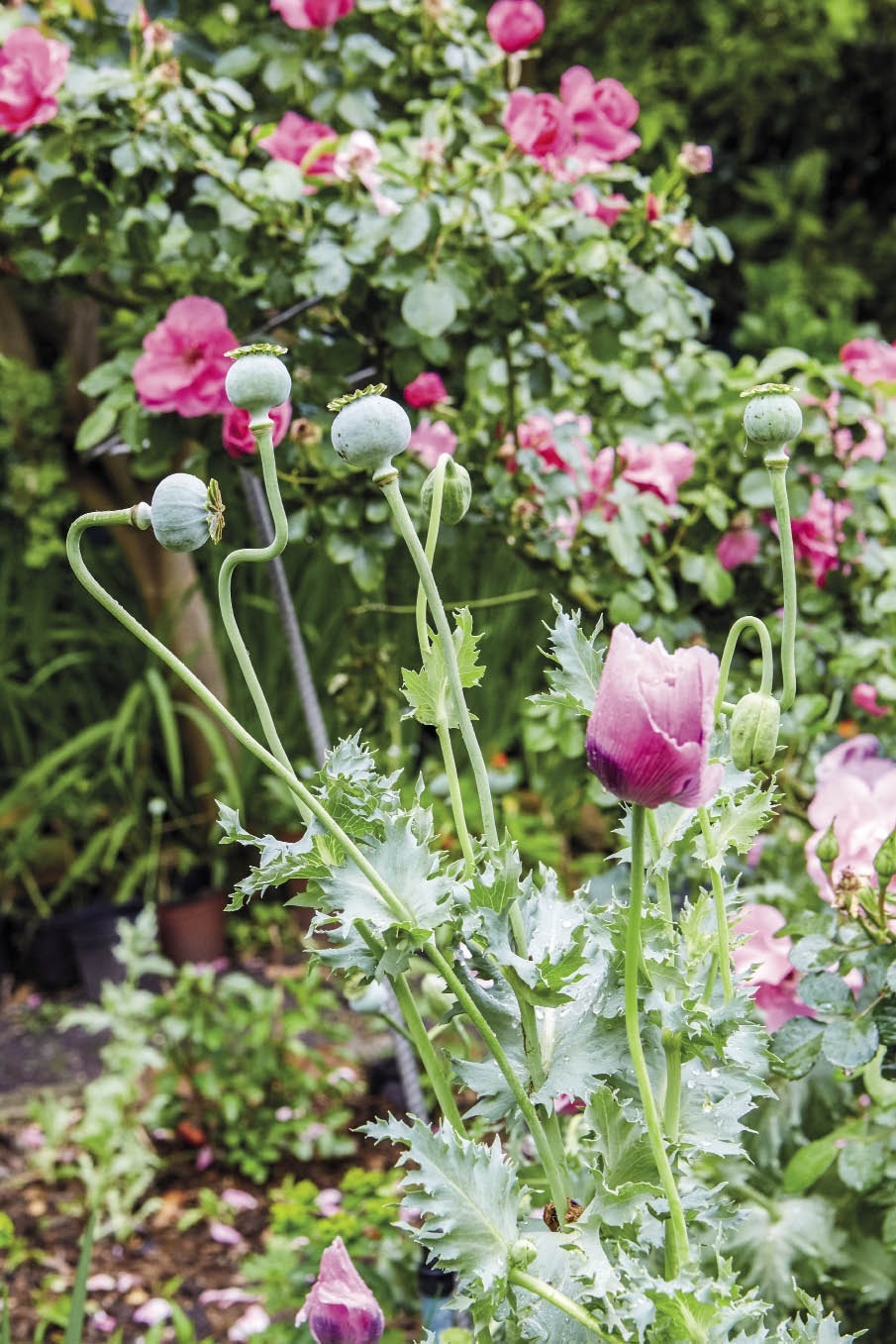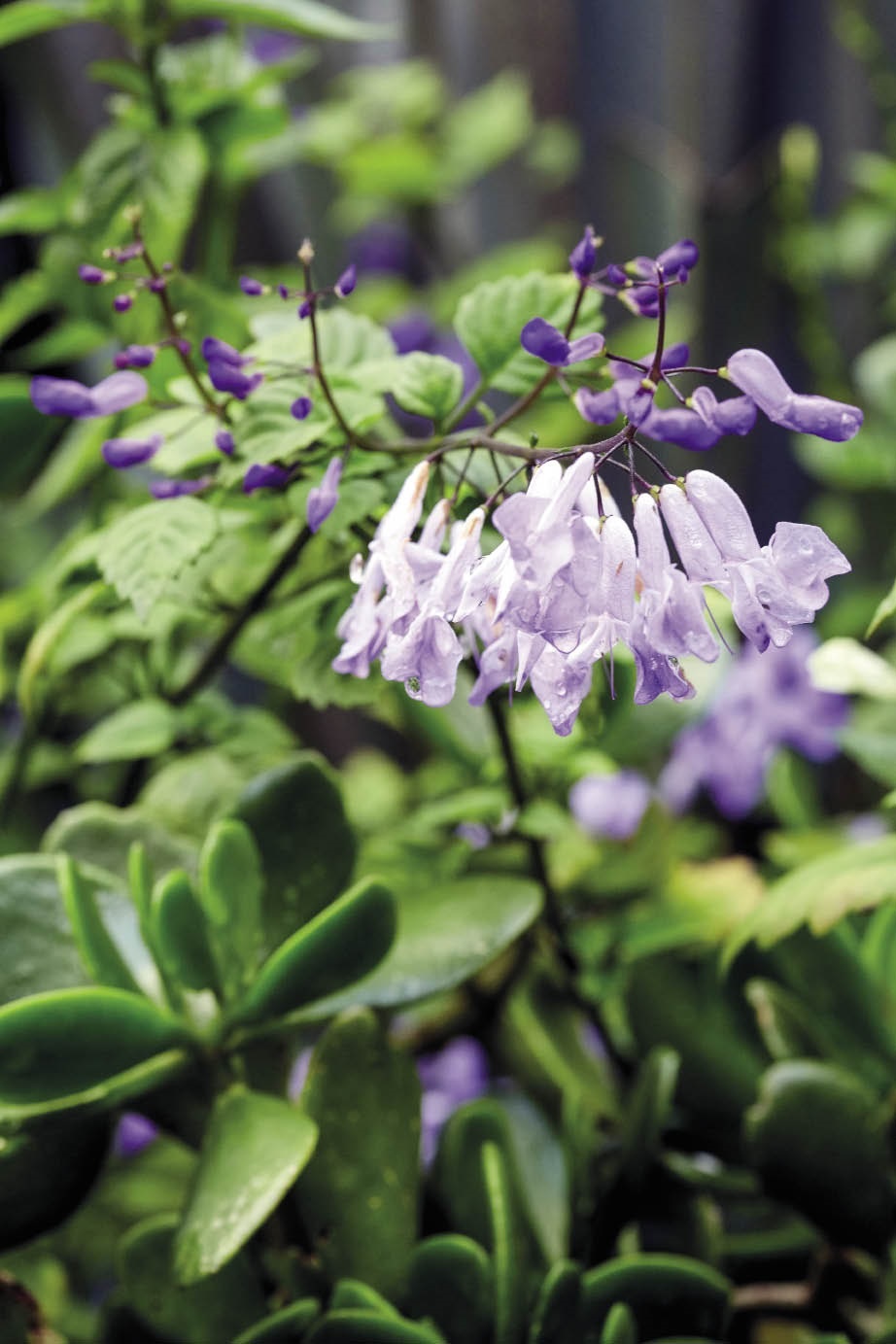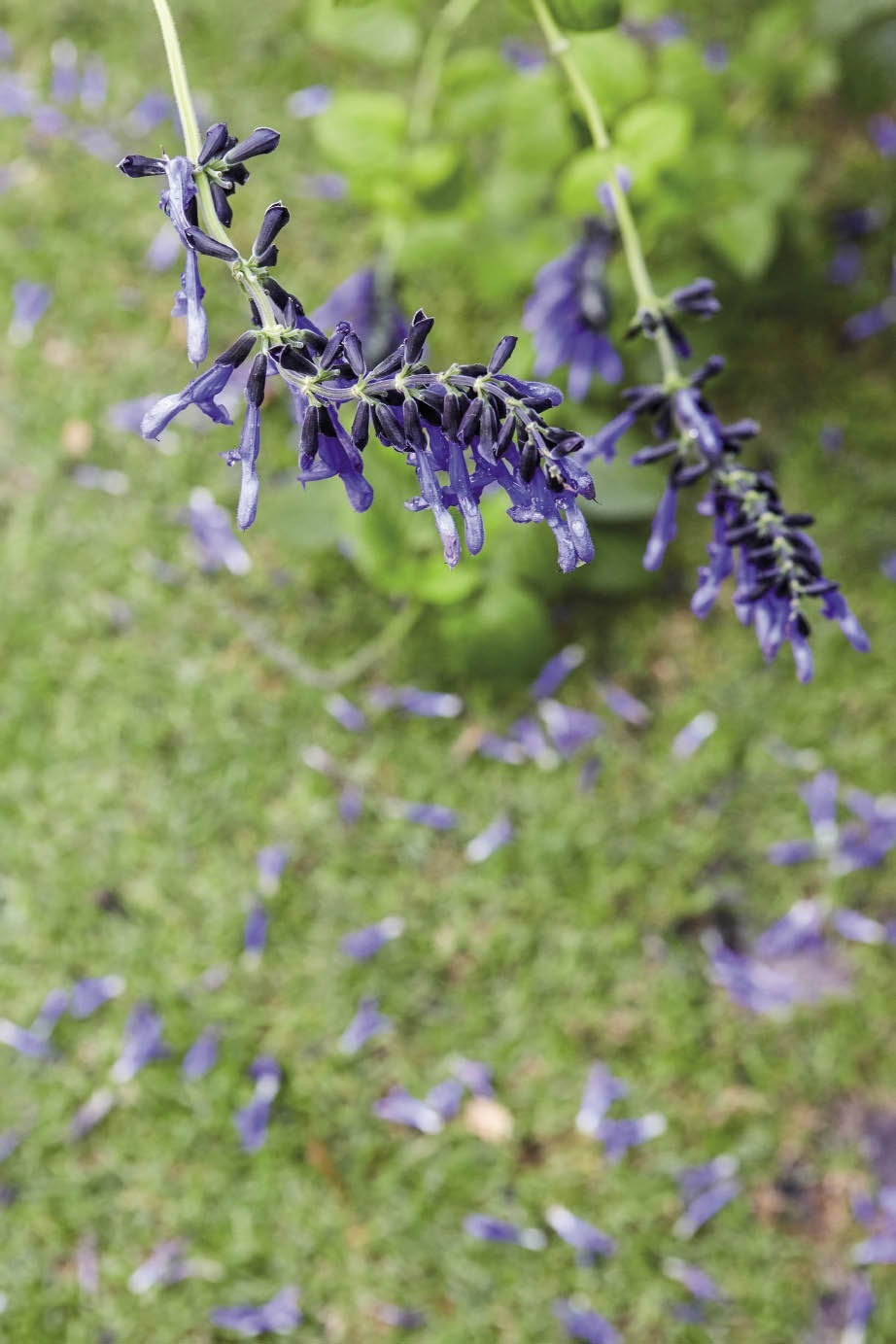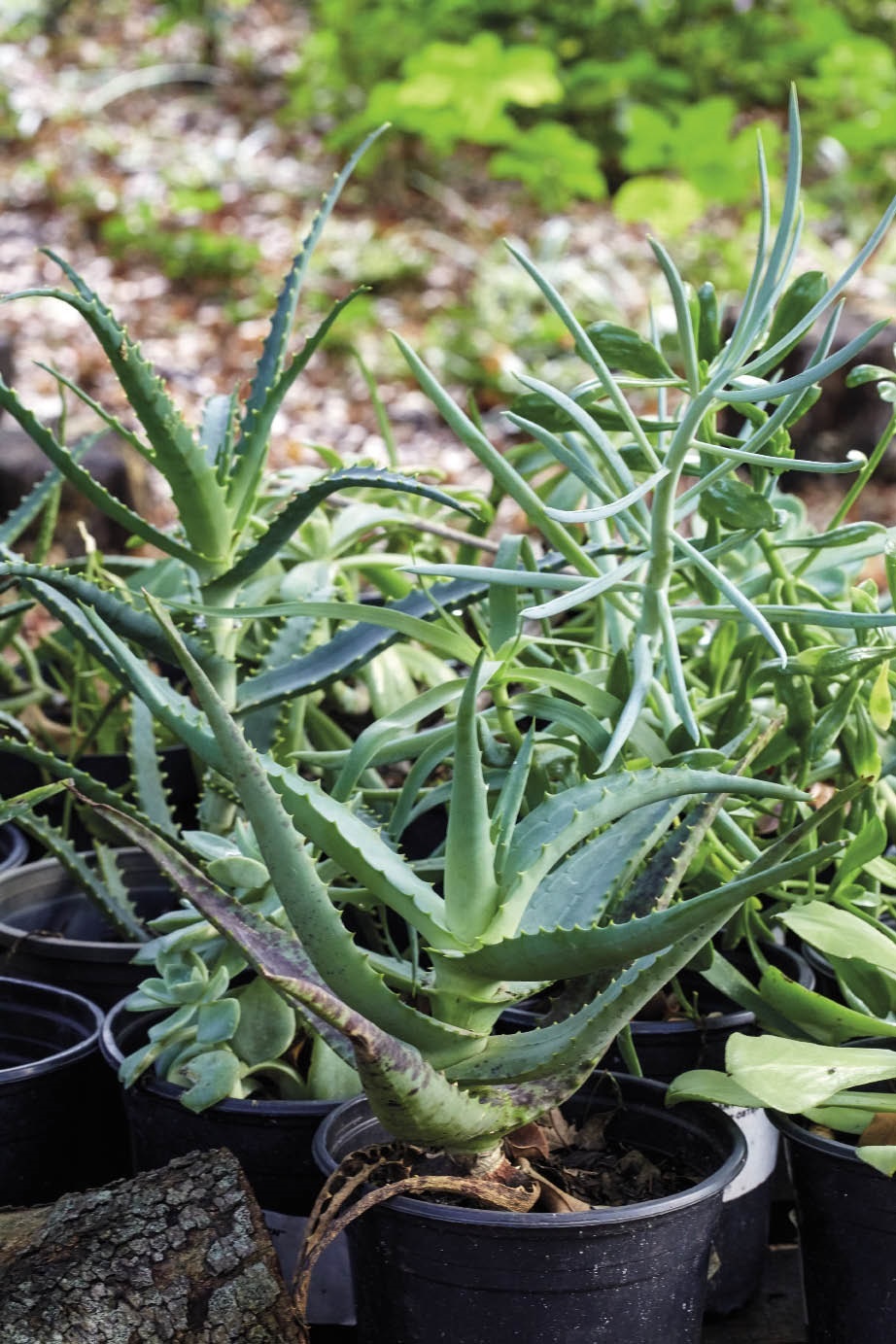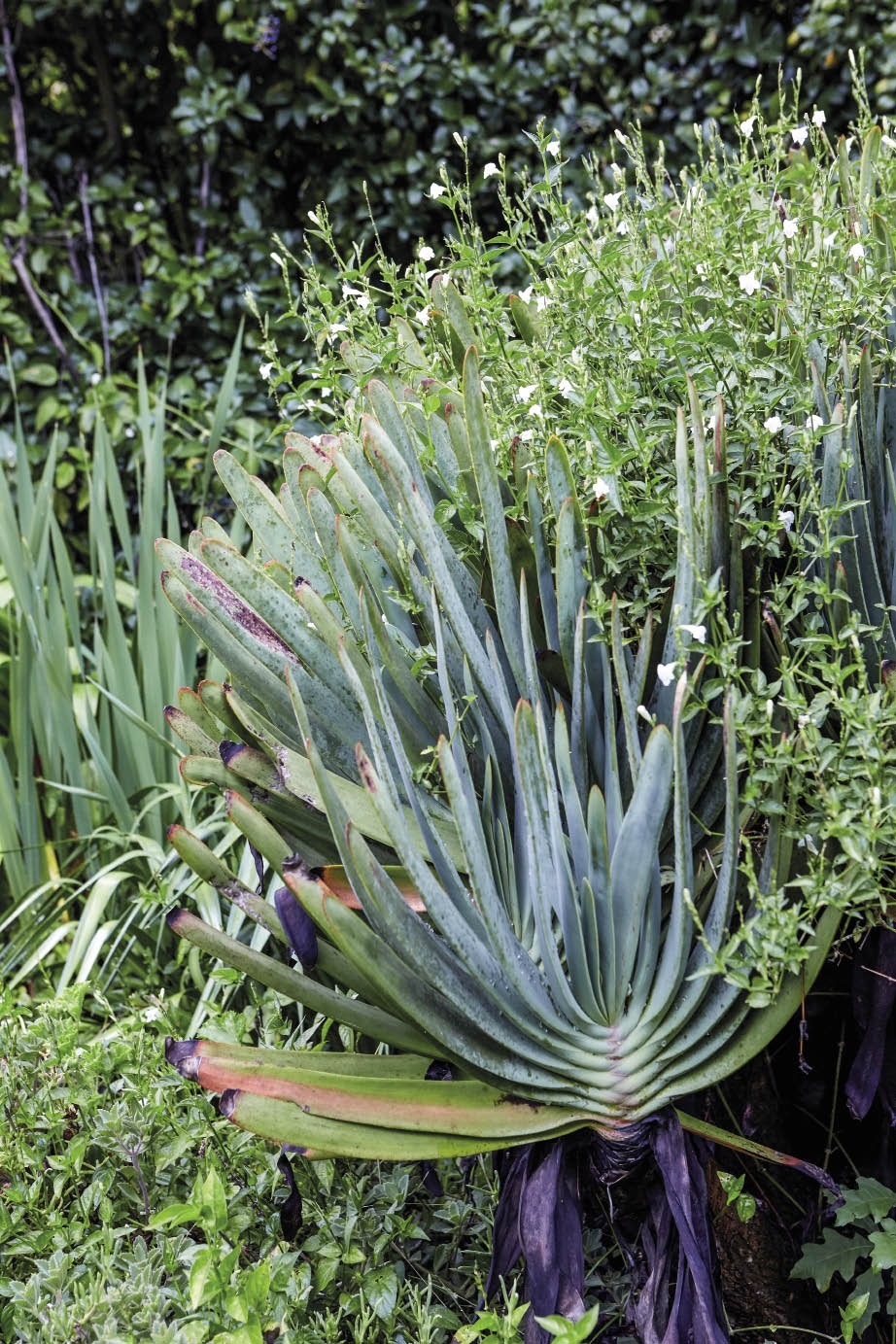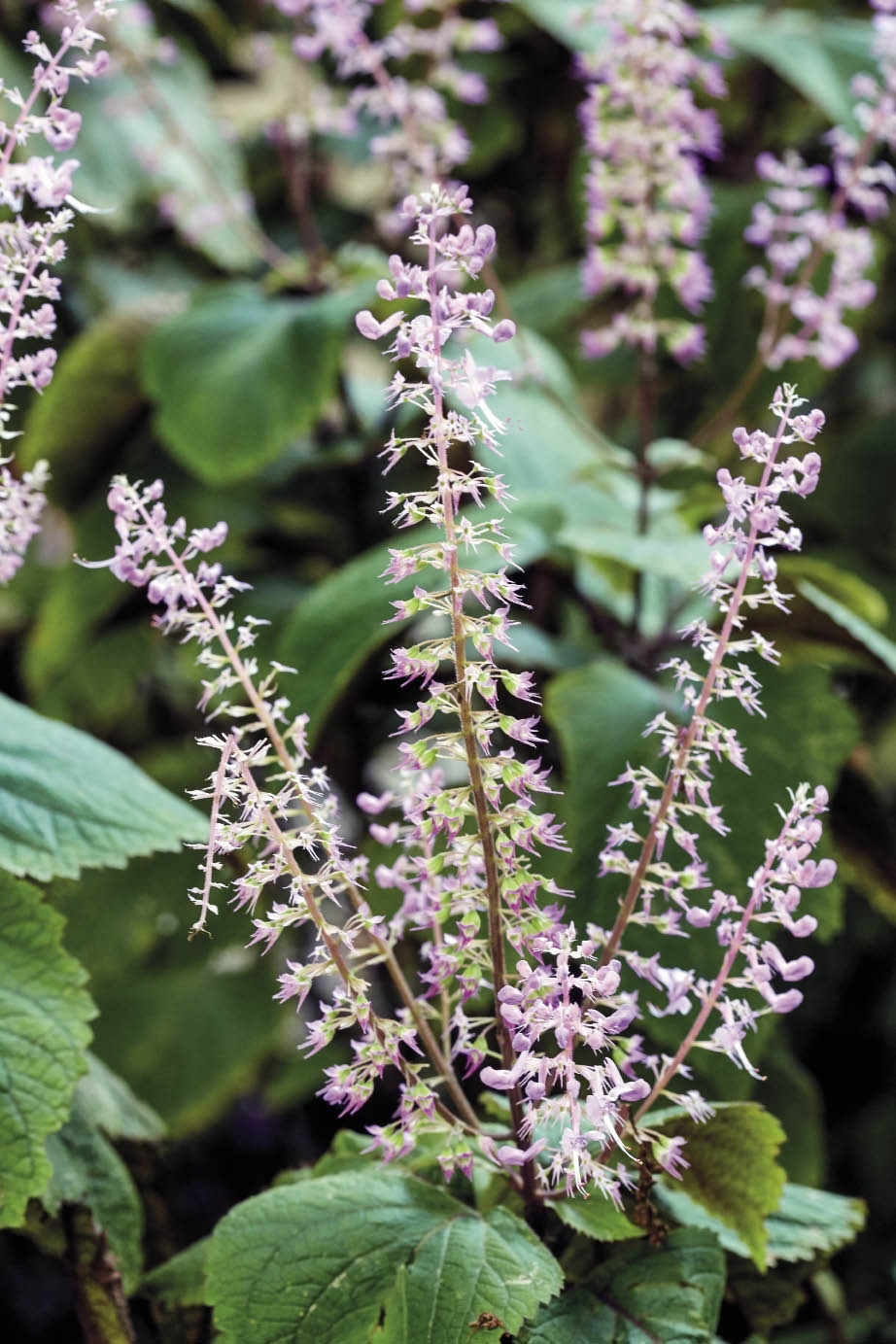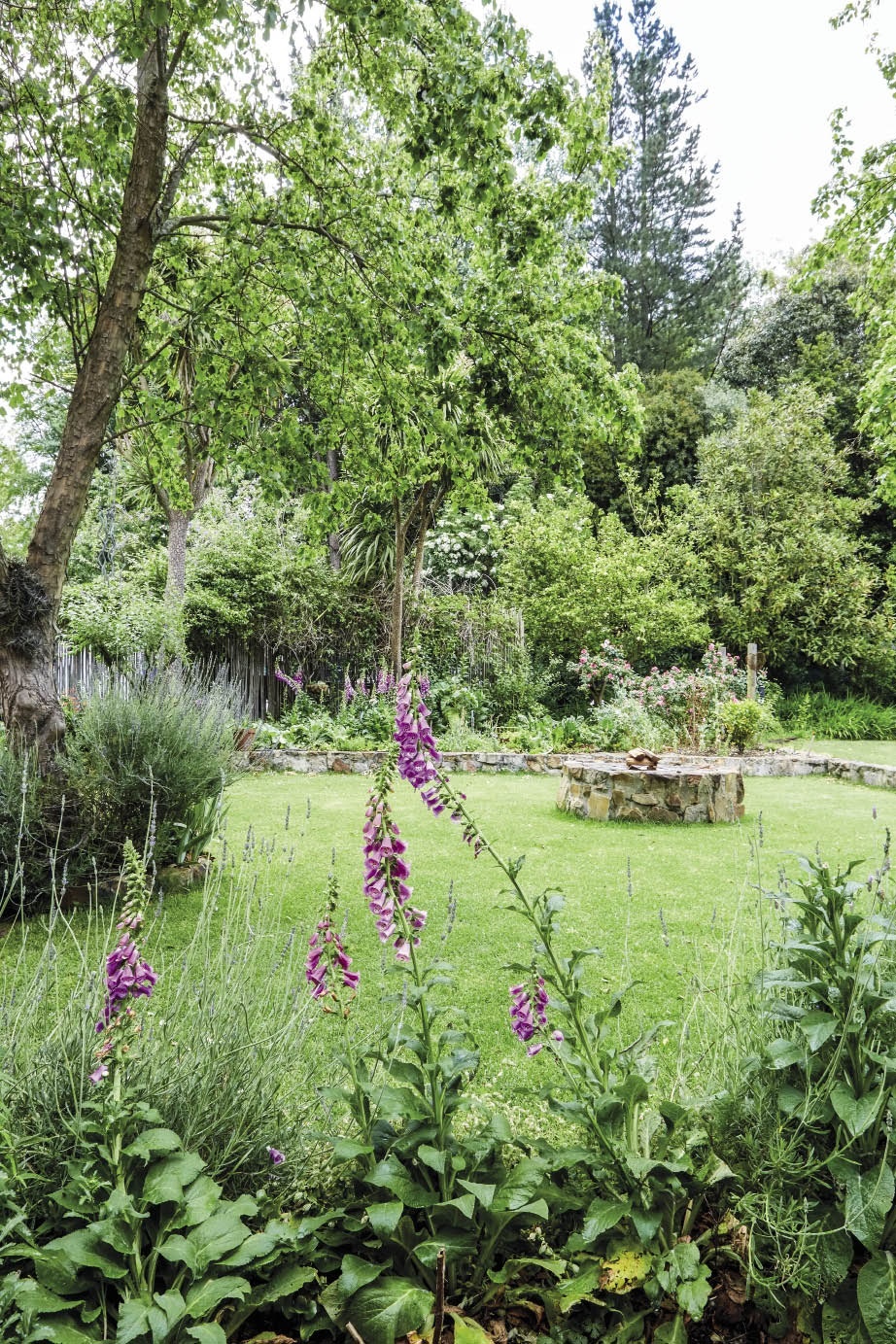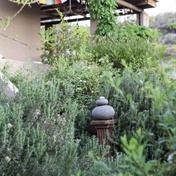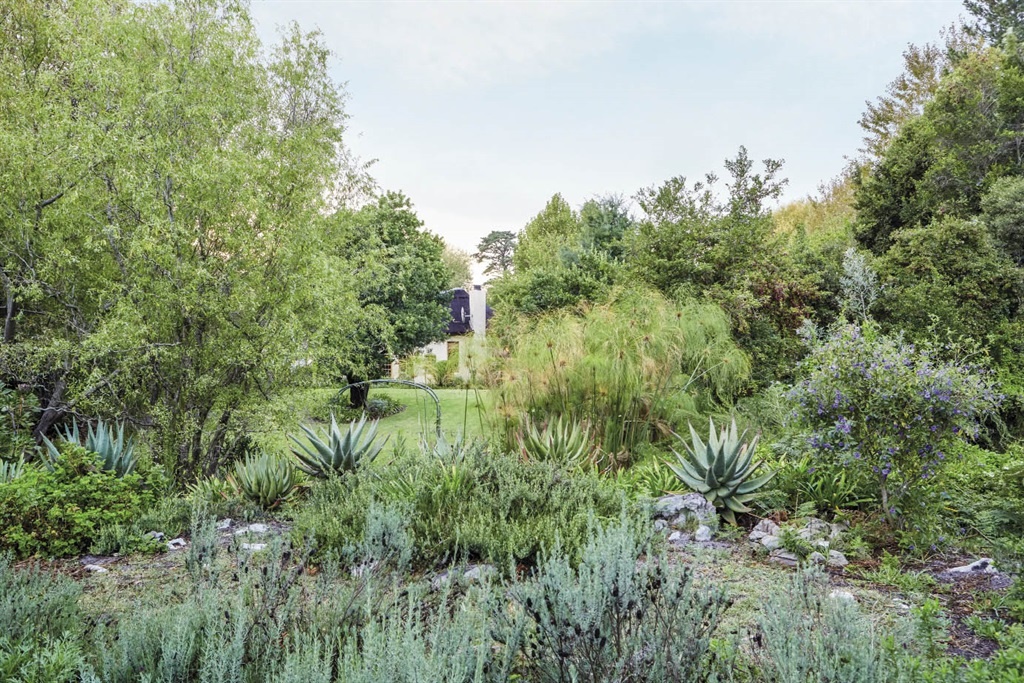
Photographs Francois Oberholster
Maya and Jean Pierre Pellissier with their two teenagers
WHERE Grabouw, Western Cape
SIZE OF GARDEN 1.5 hectares
TYPE OF SOIL Sandy with lots of stones
“I’m always taking cuttings; even when my house is overflowing with them!” says Maya Pellissier of Klipkop, a suburb in Grabouw.
“I never buy flowers; instead I pick leaves, aloes and branches and put them in glass jars which I display in the house. Those that take root, I transplant.”
And with 1.5 hectares at her disposal, there’s always room for more. “A huge garden like this needs lots of plants and because it’s impossible to buy so many, I take cuttings of everything I have in my garden. Fortunately, all the locals in Klipkop love gardening so we swap cuttings and plants with each other. I never have to go to a nursery; there are plenty of other gardening enthusiasts and farms in the area that supply everything our gardens need.”
Maya and her hubby Jean Pierre moved to this property in 2004. There wasn’t much of a garden and invasive plants abounded. Their first step was to chop out the overgrown plants surrounding the house to let in more sun in winter. Then they cleared the stream running through the erf and changed the driveway to the house.
“Because the property is so big, the previous owner only gardened on about a quarter of it; the rest was left wild. It took a long time to turn it into a garden. The wattle trees along the river had to be removed and because this invasive is also prevalent outside the property and seeds itself readily, we were still removing seedlings for about four years afterwards,” Maya recalls.
“We worked our fingers to the bone every Saturday! We were ably assisted by Charles Welkom and Ntontoni Ntyotyo – who gamely pushed our kids around in wheelbarrows in the midst of everything. The garden is now established but occasionally, if there’s too much work for Augasten Mwenda, our regular gardener, they still come and lend a hand.”
[CUTTINGS DAY!]
What could be better than a cuttings day where you can exchange plants to your heart’s content? The local gardening club, of which Maya is a member, holds such a day every year.
She explains: “In August 2017, we held our first cuttings day. Everyone around here has a big garden and we always need plants. And most of us have lots of plants from which we can take cuttings and then swap with others.
“We all get together in one of our gardens and just put the cuttings in piles so everyone can help themselves. Some even bring a whole clump so people can chop off a piece with a spade. And if we run out of plants, more are fetched until everyone has what they need.
“Last year, cuttings day was held here in my garden. More than 50 gardeners attended and every member of the garden club could bring a guest. At the end of the day, there wasn’t a single plant left. It was such a lovely sociable event; my kitchen table was fairly groaning from all the cake! It was a wonderful gardening day.”
Maya’s gardening tips
• Don’t discard anything. You can recycle everything in your garden and use it somewhere else. I use branches that I trim off to provide climbing supports for my peas. And instead of using twine to secure the stems, I cut off jasmine that grows wild here and thread it through the wooden tower. The shoots of the climber are just as tough and strong as twine.
• The young shoots of Australian jamboree (Syzygium paniculatum), especially those on the upper stems, are soft and pliable. We’ve threaded them through wire netting to create a hedge between us and the neighbours. Over time, the branches dry and harden and it looks much better than the fence. Best of all, the dogs on both sides of the hedge can no longer see each other and bark a lot less!
• Take cuttings of everything and as many of one kind as you can. I’m very lucky – my cuttings grow easily. I don’t use hormone rooting powder and place up to five cuttings in one pot with ordinary garden soil. Transplant them into your garden later or swap with friends.
• Don’t dig over your soil – you might disturb seedlings trying to germinate.
• We never rake up the leaves of the deciduous trees that fall into the beds; they make a great mulch in summer.
• For the paths running through the garden, I also use what I have. We scatter grass clippings and other garden refuse that isn’t used on the compost heaps – it forms a lovely natural surface.
• Make your own compost. We have five compost heaps, each about 4–5 m long, in which we place all the suitable garden waste and add horse and chicken manure. Vermicompost and worm tea are also fantastic. I have a 200 L container for the worm compost and use it for potted plants and my special plants.
[MAYA’S FAVOURITES]
It is very difficult to select my favourites – there are far too many to mention! I’m loath to throw plants away and always try to findaspot for them. Failing that, they are planted inapot in my ‘nursery’! These are a few of the plants I treasure:
• Sour fig, which attracts bees and quickly covers bare spots.
• Ribbon bush, a winner in shady areas.
• Aloes, which multiply easily.
• Gazanias and succulents for colour.
• Fynbos such as pincushion (Leucospermum), conebush (Leucadendron) and king protea (Protea cynaroides), which bear a profusion of blooms every year. I give these giant flowers away as gifts.
As nature intended
Maya had no preconceived plan for her garden – she just started on the driveway side and worked her way towards the back. “Initially, I made plenty of mistakes. We often had to move a bed or start over because we hit a rock substrate. My husband reckons he should put the plants on wheels because I move them around so much!
“I also had to get used to the climate. It can get very cold and wet in winter with bouts of frost, and our rainfall is over 1 000mm a year. Between 50 and 100 of my roses ‘drowned’, so I no longer plant roses. I’m not a dainty gardener; I plant masses of everything. Agapanthus, pig’s ears, aloes and bulbous plants such as Chasmanthe are real stalwarts in such a big garden. And many of the beautiful rocks on the property are part and parcel of the garden; most are too big to move anyway.
“My garden is not orderly. I like it to be wild and natural. A friend gave me five paper bags full of purple poppy seeds – those with the giant flower heads. I sowed handfuls of them!
“My veggie garden is also informal. I’ve planted veggies and herbs such as spinach, tomato, chilli, rhubarb, artichoke, rosemary, marjoram and oregano, all of which I use a lot. Any seedlings that germinate are left as is –Ihave a real aversion to pulling them out. Those are the toughest plants. If you move them elsewhere, they don’t grow as well. The wild rocket even comes up between the paving and tastes delicious. This year we also had an abundance of granadillas; I couldn’t even give them away as everyone in Klipkop had so many!” she says.
“I adore my garden and love all aspects of gardening; taking cuttings and sharing them, pruning, sowing and harvesting are all fun. But weeding after the rains is still the best!”
[STALWARTS IN HER GARDEN]
• Aloes such as krantz aloe (Aloe arborescens ‘Eloff’ and A. arborescens ‘Pearson’) and the small guinea fowl aloe (Aristaloe aristata).
• Spurflowers (Plectranthus) for shady spots.
• Salvias in any colour.
• Pig’s ear (Cotyledon orbiculata) en masse.
• Climbers such as Chinese jasmine (Jasminum polyanthum), black-eyed Susan (Thunbergia alata) and, of course, my granadillas!
• Shrubs such as Cape may (Spiraea cantoniensis), ribbon bush (Hypoestes aristata) and confetti bush (Coleonema album). I also have elderberry (Sambucus nigra) coming up like weeds.
• I have lots of trees, many of which are deciduous, such as American sweet gum (Liquidambar styraciflua), London plane (Platanus x acerifolia), white stinkwood (Celtis africana) and water oak (Quercus nigra).
• Those plants that seed themselves, multiply readily or require little attention: lavender, pink and blue forget-me-nots, poppies, plumbago, creeping foxglove, red aptenia, agapanthus, fairy crassula, arum lilies, Cape honeysuckle, hen-and-chickens, September bush, aloes, foxgloves, bulbs such as Chasmanthe aethiopica and C. floribunda, and many vegetables.




 Publications
Publications
 Partners
Partners





